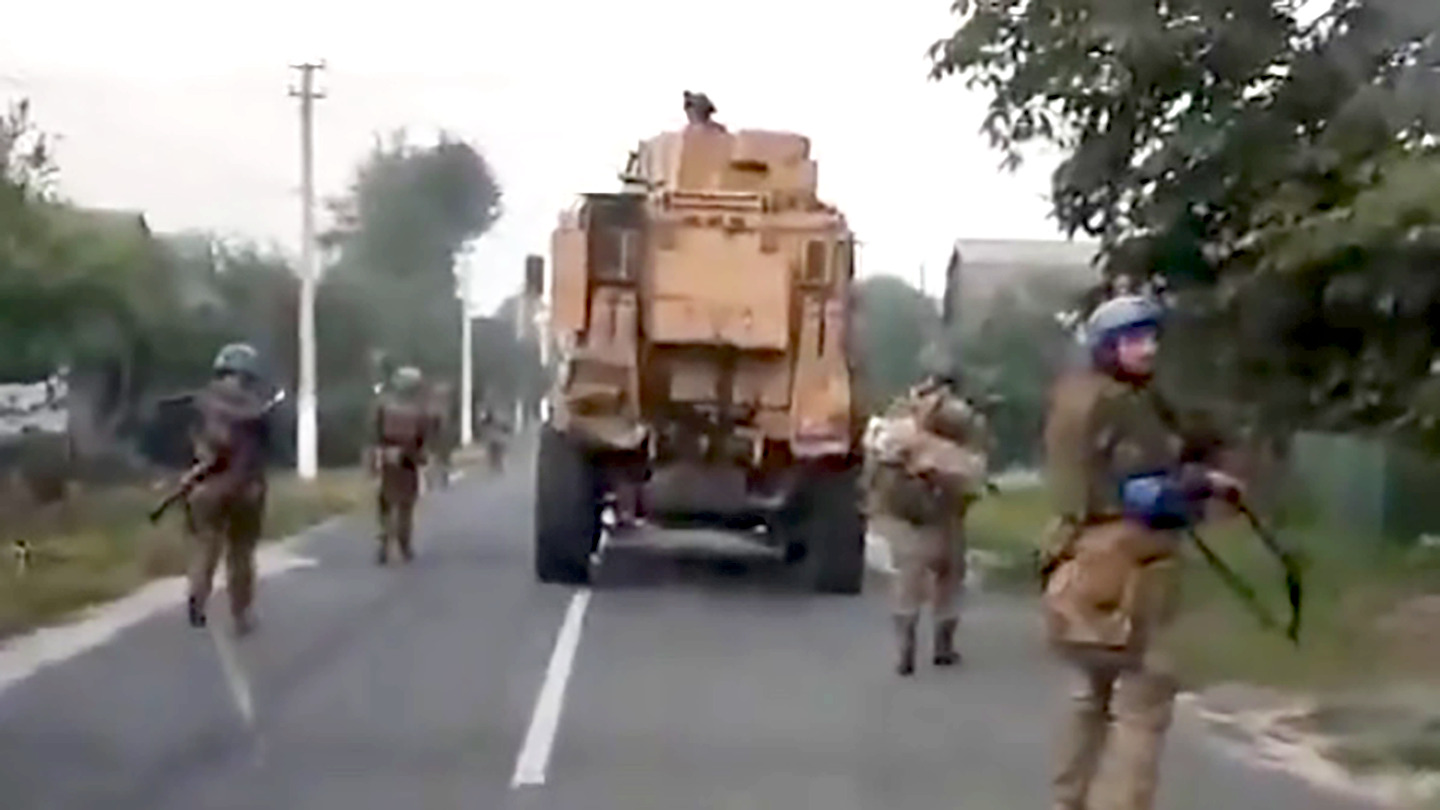The invasion of Kursk, now on its ninth day, is a “carefully planned” operation based in large measure on lessons Ukraine learned from last summer’s failed counteroffensive, a retired high-ranking Ukrainian officer told The War Zone on Tuesday.
“After the unsuccessful counteroffensive operations in 2023, lasting delay of security assistance, and challenges in [the] mobilization [of] new manpower, Ukraine lost the strategic and operational initiatives,” he said, speaking anonymously to discuss operational details. “The Kursk insurgency, with its successful launch and continuation, will help to rebuild higher morale among the Ukrainian troops and hopefully, with additional security assistance from partners, will help to regain these strategic, operational, and tactical initiatives.”
It was not until Monday that Ukraine’s leadership offered any operational details about the invasion, with Ukrainian President Volodymyr Zelensky proclaiming that his troops controlled nearly 400 square miles of territory in Kursk. The reason for the informational blackout was to maintain the element of surprise, the retired officer explained. Still, some units posted their advances on social media, like the one in the video below.
The “secret mode of planning and execution of this operation demonstrates that the Ukrainian side learned well lessons from the unsuccessful counteroffensive operation, specifically the issue of strategic communication.”
One of the big failures of that operation was the combination of a long delay after repeated statements and months of speculation that it was looming. As a result, Russia knew where Ukraine was heading and had plenty of time to add to its fortifications in Zaporizhzhia Oblast and defend against it.
Another lesson is fully embracing an “asymmetric approach and demonstrating the ability to do it right now,” an issue that “was raised constantly by Western leaders.”
Unlike last summer’s efforts to cleave Russia’s so-called land bridge to Crimea, this operation was designed with fewer troops and logistical requirements, the retired officer told us.
The idea was to “apply an effect-based approach to planning and conduct operations by exploring the enemy’s vulnerability and capitalize on our own limited resources and capabilities,” he said.
The invasion has four key objectives, the veteran officer analyzed.
The first is to “reduce the combat pressure of Russian troops on Ukraine and disrupt Russia’s offensive operational tempo in eastern and southern Ukraine.”
The second is to “create more comfortable negotiating conditions when the time will come, based on strength,” he said, adding that Ukraine will “grab land in exchange for Ukrainian territories temporarily occupied by Russia.”
The third is to “demonstrate Russia’s strategic and operational vulnerability in the security and defense spheres, including the low-level combat readiness of troops made up of conscript soldiers, huge problems in border security and the ineffective political-military leadership, including Putin’s role in it.”
The fourth objective is to undermine Russia by creating “political and economic instability. The large number of internally displaced people could help regular Russians understand the center of gravity of their problems.”
There are currently upwards of 10,000 Ukrainian troops inside Kursk Oblast, the retired officer said. They are in Russia on a rotational basis, depending on the security situation elsewhere.
“Our troops are on constant move mode to Kursk and back based on specification missions,” he said.
They will stay “as long as possible,” said the retired officer. “It is not treated as a raid. It is a well-planned and coordinated operation.”
Ukraine’s efforts in Belgorod “depend on the success of the Kursk insurgency,” he said. “They will go when it will be easy, and stop when it will be hard.”
Taking the fight inside Russia has achieved more than just holding territory.
“We noted a reduction in the use of glide bombs toward Kharkiv City by almost three to six times,” he said. “Regularly this city suffered 30 to 60 launched glided bombs on a daily basis. Right now, they are launching a maximum of up to 10.”
In addition, Ukrainian intelligence “has intercepted Russian messages to stop the systematic torture of Ukrainian prisoners of war and not allow any more deaths to happen,” the retired officer said. Russia, he suggested, is trying to be more accountable for its actions with so many prisoners taken by Ukraine.
However, as Ukraine has committed a large amount of resources in Russia, there are several Ukrainian cities, like Toretsk and Pokrovsk in Donetsk Oblast, in serious danger of being captured.
The invasion of Russia was launched knowing the challenges Ukraine faces in defending its own land, especially in the east, the retired officer said
“It did not change the course of action,” he suggested. “There are a number of fronts and one is the east. My feeling is that our action in Kursk and Belgorod will have to stimulate a new calculus.”
While the invasion may have been launched to relieve Russian pressure in Ukraine, some troops there say they have yet to see those results.
Ukraine has placed a big bet on its invasion of Kursk. Time will tell if it pays off or if this turns out to be an unfortunate waste of resources during a time when Ukrainian forces are stretched very thin. So far, it points to the former.
Contact the author: howard@thewarzone.com
